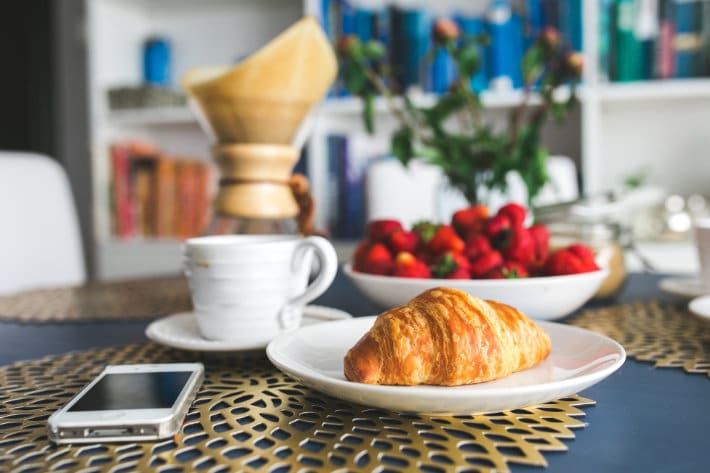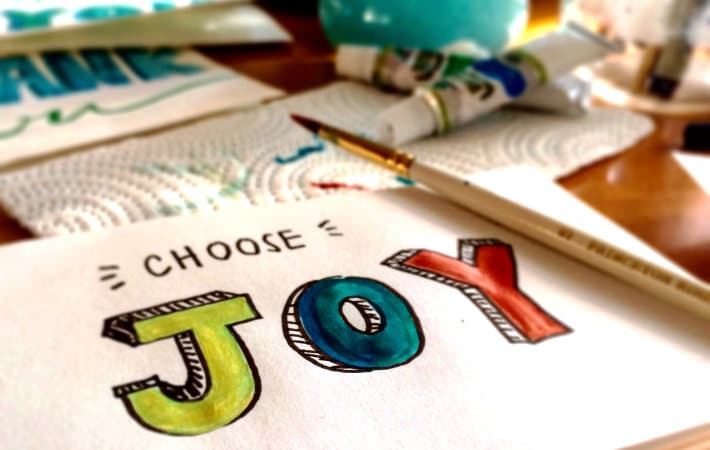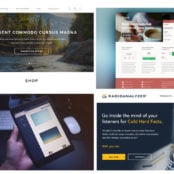
Why is it some days you sit there in a perfect flow, cranking out new designs with seemingly little effort, yet on others it feels as though your muse has packed her bags and left the building with no word on her return?
Don’t worry, it happens to us all. It’s a classic case of designer’s block.
It often strikes partway through an important project, and no amount of coffee or cute animal videos will save you from that rapidly approaching deadline.
So how do you get back in the zone? Here are 10 great tips to reactivate your creative juices.
1. Look within
It may be tempting to sit there trying to force the good ideas to come – you have a deadline after all and your client keeps asking for progress updates – but believe me, that approach never works.
Instead, take a step back, sit somewhere quiet, and listen to what’s going on in that overworked head of yours.
If you’re struggling to make decisions, such as choosing a color scheme or font, your prefrontal cortex has probably had enough. This is the part of your brain that makes smart decisions, but can become fatigued if you overdo it.
If you’re having trouble dreaming up anything original or creative, this indicates that your cerebral cortex needs some love and attention. Often, this indicates stress, which can drain the energy from the creative part of your brain.
If you can pinpoint the problem, it will be easier to find a solution.
2. Refuel
If you’re struggling to make decisions, this could be your body’s way of asking for food. Food has a huge effect on mood and energy levels, and if you’re running low, your ability to think clearly will be affected.
Take a step away and eat something. By that, I mean something healthy like a piece of fruit or nuts. Avoid anything too sugary, as it will give you a huge energy spike, which drops back down just as quickly.
On the subject of food, remember your Mum’s advice and always start the day with a healthy, filling breakfast.
3. Eliminate decisions
Every decision you make throughout the day – such as what clothes to wear, what you want to eat for breakfast, and even swiping apps on your smartphone – uses up your mental energy reserves. So if you fill your morning with unimportant decisions or start your day answering emails or dealing with silly enquiries, it’s easy to be mentally exhausted by lunchtime.
While you can recharge a little by eating lunch or taking a nap, you’ll never be quite as sharp as you are first thing.
To combat this, eliminate as many decisions as possible. At night, lay out your clothes for the following day, prepare your breakfast and packed lunch, and write out a to-do list with the three most important tasks for the following day so you know exactly what you need to do first.
Set aside certain times of the day to deal with emails and client enquiries and, if possible, ensure that’s after your morning work session so you can maximize those creative juices. And leave playing with your smartphone to a minimum.
4. Take a break
Sometimes you simply need to take a break. Of course, a two-week vacation in the Bahamas may not be realistic, but taking a step away from your desk for 15 to 30 minutes is so much more productive than staring at a blank screen hoping inspiration will hit.
Meditate. Take a walk outside and leave your phone behind so you can appreciate your surroundings and listen to the birdsong (or traffic roar, depending on your location). Listen to music. Have a nap.
Honor that part of you that’s crying ‘I’ve had enough,’ and rest a while. “Adequate rest is equally important as working hard. ”
5. Get active
Staring at a blank screen may not be your problem; it could be that you’re bursting with ideas for your new project and your client has given you a free rein. While this is a dream for most designers, sometimes too much choice can be a bad thing.
A good solution here is to take some action. Literally.
Exercise is a wonderful balm for getting your blood pumping and reactivating your creative juices (and much more besides). Don’t worry if the gym isn’t your thing – a brisk walk or jog will work equally well.
6. Be inspired
Every artist needs inspiration, so learn what inspires you and ensure you keep it close to hand.
Carry a notepad, sketchbook, or camera with you to record things you find inspiring. Create playlists of your favorite inspirational tunes. Read design blogs and look at design websites. Make a Pinterest inspiration board and fill it with articles, images, websites, and tutorials.
Then, if you’re struggling for inspiration, turn to your ‘inspiration manual’ and use it to boost your creativity and inspire yourself.
7. Play
The importance of creative play can never be underestimated. Keep an adult coloring book and some colored pencils in your desk, and take them out if you need inspiration – they’re a wonderful form of meditation and great for creativity. Alternatively, keep some sheets of blank paper nearby and doodle. Sketch anything that comes to mind – it doesn’t have to be related to your project. It will sharpen your drawing skills, and you may find a spark of inspiration that’s a great starting point for your current project.
If you want to play with something a little closer to home, try reimagining one of your old design projects using the latest design trends to nudge you out of your comfort zone. Engaging your design brain on an old project with no importance will take away the stress and can help to free up any limitations that are holding you back.
8. Go on an artist’s date
Julia Cameron is onto a great thing with her artist dates, first explored in her seminal book, The Artist’s Way. Looking at creativity in action is a fantastic way to encourage your creativity to return. So take yourself off to a museum or art gallery and take inspiration from the great masters. Watch a film, be it an Oscar-nominated blockbuster or an independent foreign film. Visit a creative shop, such as one selling art supplies, musical instruments, or fabrics. Find a fun new creative blog to read. Cook yourself an indulgent meal. Treat yourself to an afternoon at a spa.
Taking regular action to keep your creativity cup full helps to keep designer’s block at bay.
9. Talk to people
It’s true what they say, ‘a problem shared is a problem halved,’ so never be embarrassed to admit you’re suffering from a lack of creativity and inspiration. Call a powwow of your fellow designers to brainstorm ideas. It doesn’t need to be a formal meeting, neither do you need to divulge any confidential information about your client – sometimes simply chatting through on a general level can trigger something useful. Even if you don’t resolve anything for your current project, they may have their own ideas on overcoming designer’s block.
Don’t feel left out if you work from home – there are plenty of online design forums where you can chat to fellow designers and mull over problems.
10. Keep notes
If designer’s block rears its ugly head frequently, keep notes on what you were working on at the time to see if it’s triggered by something in particular. Our brains are rather like modeling clay, so if you react to something with fear or stress, your brain will remember and next time you face a similar situation, it will react in a similar fashion. Recognizing your trigger points can help to prevent the problem before it’s even begun.
These are our top tips for overcoming designer’s block. What methods do you use when you’re struggling for inspiration? Share your great tips in the comments below.











Comments ( 0 )